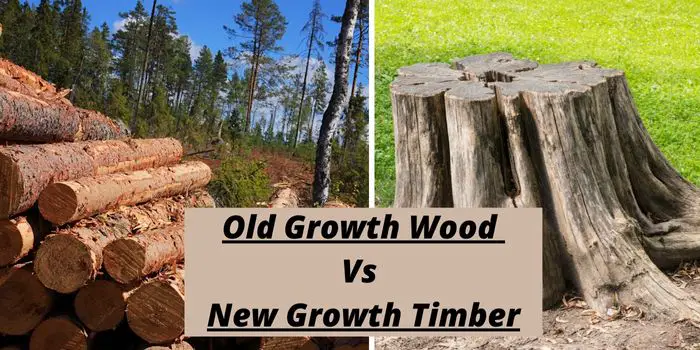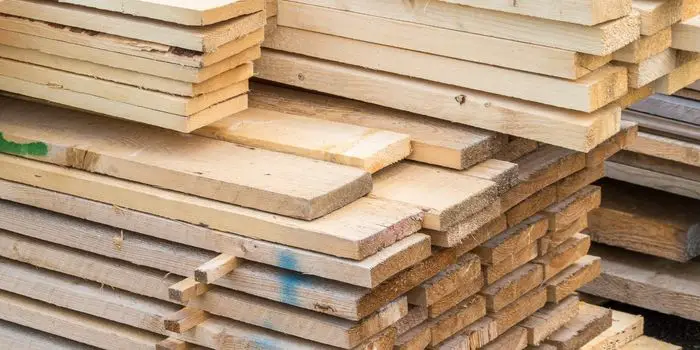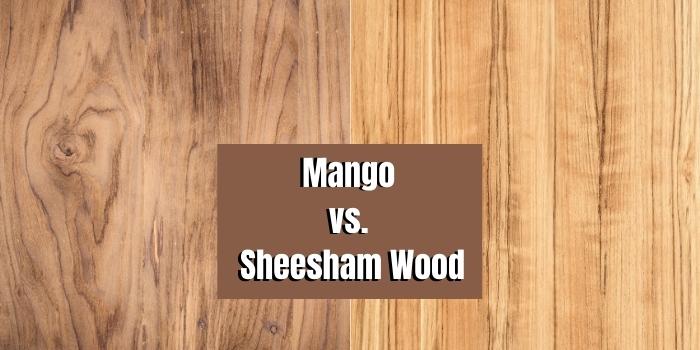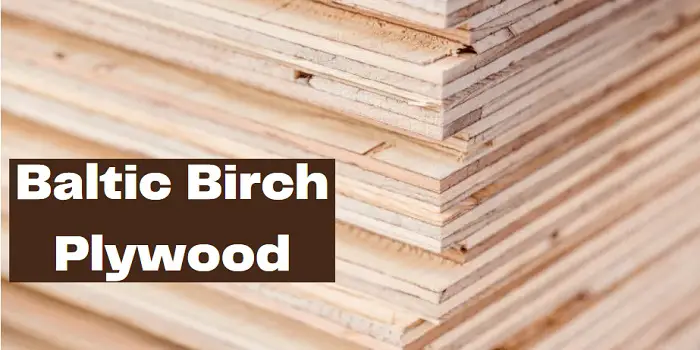
It may seem at first to be an odd question. Is there a difference between old-growth wood and new-growth timber? After all, isn’t all wood the same?
What difference does it make if the trees are older when they are cut down for timber?
The simple difference is that old-growth wood comes from trees that are over 200 years old that grow in undisturbed forests.
While new growth timber normally comes from man-made tree farms or is planted by hand and is considerably younger.
But the differences are more pronounced than their age and location, which means knowing the difference will help you make the best-informed choice for your project.
Old Growth Wood
It’s not just the age; it is the growing conditions that make old-growth wood considerably different compared to new-growth timber.
Because the forests in which the trees grow are densely packed, the trees themselves tend to grow slowly.
The result is that the growth rings are relatively small, which creates a thick, textured wood.
The most obvious advantage is that you get deep, textured wood for your project.
But because the growth rings are so tight, the wood is also more durable and less subject to warping and rot.
So this means that old-growth wood is generally superior in terms of resistance and longevity, but it is also rather expensive and hard to come by.
New Growth Lumber
These are trees that mostly come from tree farms. This is what you find in hardware stores because the spacing between the trees allows for faster growth.
Because of the greater space compared to old-growth forests, the trees can be harvested at a much younger age.
The visual difference is that the rings of new-growth wood are more widely spaced. Faster growth means more bulk is added each year, so the spaces between the rings are wider.
The advantage of new-growth wood is that it is easy to find, inexpensive, and has a lighter, newer appearance compared to its old-growth counterparts.
The downside is that new-growth wood is less durable and more subject to rot and warping.
This can be countered by using products that treat the wood, but that will add to the expense.
How to Tell the Difference?
You can easily tell the difference between old-growth and new-growth wood by looking at the spacing between the rings.
New growth wood will have as little as one to two rings per inch, while old growth wood will have from eight up to fifty rings per inch. Sometimes the number of rings is so great that they cannot be accurately counted.
In addition, new growth wood will have a lighter coloring, while old growth tends to be darker. This is typically a condition of how fast the wood grows over time.
It is an aesthetic difference only, but one that many find essential for their projects.

Which Wood to Choose Between Both?
That will depend on your project and budget, as there are advantages to both. However, old-growth wood is normally better suited for smaller projects.
You’ll find old-growth wood used for musical instruments because they do provide superior aesthetic quality, but also, the thickness of the rings offers a better resonance for guitars and the like.
Old growth wood is also well suited for repairing or renovating older homes that were constructed from old-growth wood as well.
But even if your home is new, old-growth wood is superior to new-growth wood thanks to its durability and resistance to rot.
Just be prepared to pay considerably more and have to look harder for sources of old-growth wood.
New growth wood is not for those seeking an aesthetically pleasing appearance as old growth wood. But it is considerably cheaper and easier to find.
New growth wood is best suited for larger projects—especially those where uniformity is key. It’s also easier to cut and shape, making it perfect for projects that require precise measurements.
At the same time, old-growth wood is rather difficult to cut accurately beyond 1/16th of an inch.
You’ll often find old-growth, and new-growth wood used together on specific projects such as furniture.
The new growth wood is used to make the skeleton, while the old growth wood provides the outer surface. This makes for a rustic, beautiful appearance while still being affordable to produce.
Where You Can Find New Growth and Old Growth Wood
New-growth wood is readily available and most lumber yards and home improvement stores and outlets.
It is designed to be readily available, and you can find many different shapes and sizes that are available and affordable.
If you are in the market for old-growth wood, there are several places you can find it.
However, you may have to look in some out-of-the-way places to discover enough for your needs.
Some typical places where old-growth wood can be found include the following.
- Boat Yards & Construction Sites
- Fallen Trees & Logs in Lakes & Rivers
- Flea Markets & Yard Sales
- Lumber Yards
- Old Barns, Homes, and Buildings
- Reclaim & Salvage Yards
- Wood Spindles & Palettes
The number of places to find old-growth wood is considerable. You will need to do a proper search to find what you need for your project.
Final Thoughts
The use of old-growth wood has become more controversial because of where it comes from.
Since this type of wood takes over 200 years to grow and is only found in virgin forests, there is a push to protect such lands from further harvesting. It is one reason why old-growth wood is harder to come by.
However, you can often find old-growth wood that has been repurposed from other projects. That is an eco-friendlier source of wood, which is still in good shape and can be perfect for many smaller types of projects.
Share the post "Old Growth vs. New Growth Timber: What’s Better for My Project?"

Hi, I am Mark Garner a professional carpenter, woodworker, and DIY painter. I live in the small city of Peoria, Arizona as a semi-retired woodworker. I have started this blog with a simple motive to help you with my wood experience in this sector. If you like to know more about what I love doing and how it all got started, you can check more about me here.




